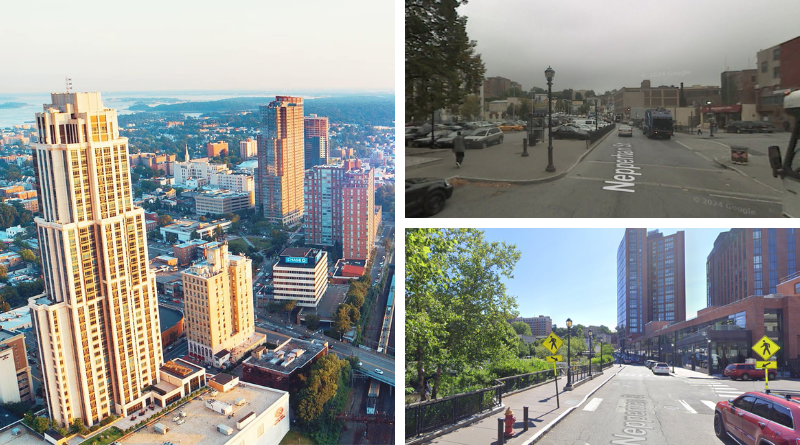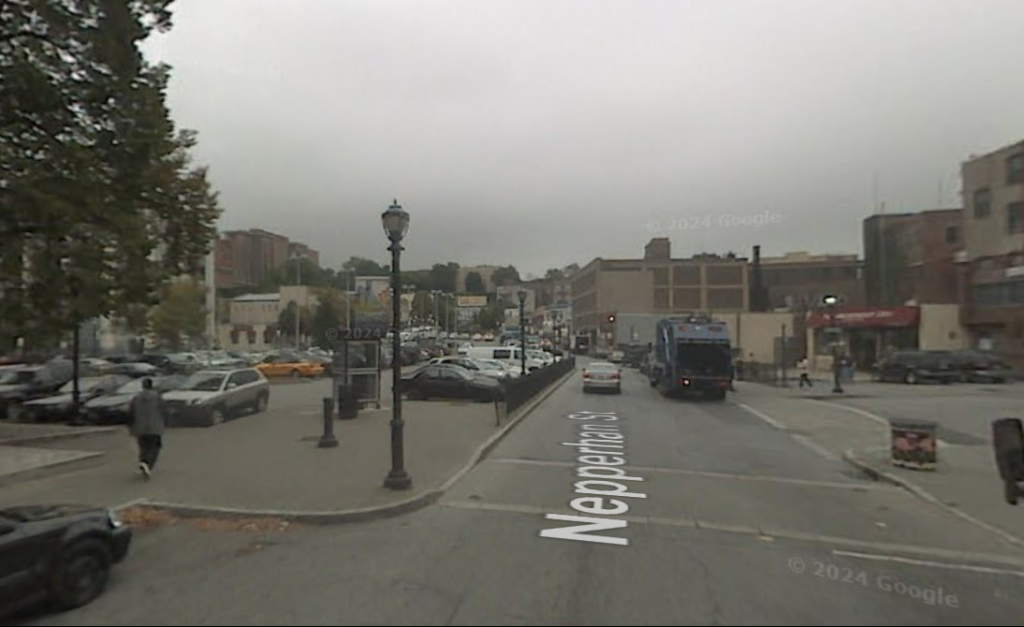New Rochelle skyline (left); Yonkers downtown in 2007; Yonkers downtown in 2024 (right top-to-bottom)
Westchester County, New York, shares many commonalities with north and central New Jersey. Both areas were shaped by their proximity to New York City, emerging as early examples of American suburbanization, a legacy that continues to define their status today. Both feature extensive commuter rail systems connecting towns and cities to Manhattan, a mix of dense urban centers and suburban enclaves, and ambitions to compete as commercial and corporate hubs in NYC’s shadow. And both face high costs of living due to a persistent shortage of affordable housing.
From 2010 to 2020, Westchester County issued fewer building permits per capita than any suburban county in neighboring Massachusetts, Connecticut, New Jersey, or Pennsylvania. Yet the county’s largest cities, Yonkers (the county’s largest city) and New Rochelle (its second largest) are leading efforts to address this issue. Both have demonstrated a decades-long commitment to transit-oriented development and new construction.
As a result, Yonkers’ population grew by 8 percent between 2010 and 2020—the largest increase since 1960—solidifying its position as New York’s third-largest city. New Rochelle grew from 79,726 people in 2020 to 85,512 in 2024, according to the American Community Survey.
This development has also translated to more affordable rents. While rents in Jersey City, Hoboken, and Newark rose by roughly 24-29 percent between January 2020 and August 2025, rents in Yonkers and New Rochelle increased by only 8.9 and 1.6 percent, respectively. The success of these cities in implementing transit-oriented housing provides a potential blueprint for the rest of Westchester and north and central New Jersey.
Yonkers
Transit-Oriented Growth
Public transportation has long played a major role in the City’s local economy. Yonkers features four commuter rail stations on the Hudson Line—Glenwood, Greystone, Ludlow, and Yonkers—offering 30-minute commutes to Grand Central Terminal during peak service hours. According to American Community Survey data from 2023, Yonkers ranked seventh among all cities in public transportation use, ranking just above Newark and below Jersey City.
By 2016, several residential projects near Metro-North train stations were underway in Yonkers. At a city exhibition showcasing these developments, Mayor Mike Spano voiced strong support for positioning Yonkers at the forefront of transit-oriented development. Notable projects included:
- River Tides at Greystone: $100 million, 330 units, direct walkway to Greystone Metro-North Station (Ginsburg Development)
- River Club at Hudson Park: $85 million, 213-unit tower within walking distance of the Yonkers Metro-North Station (Collins Enterprises)
- UNO: $15 million, 100-unit affordable housing complex also within walking distance of the Yonkers Metro-North Station (National Resources)
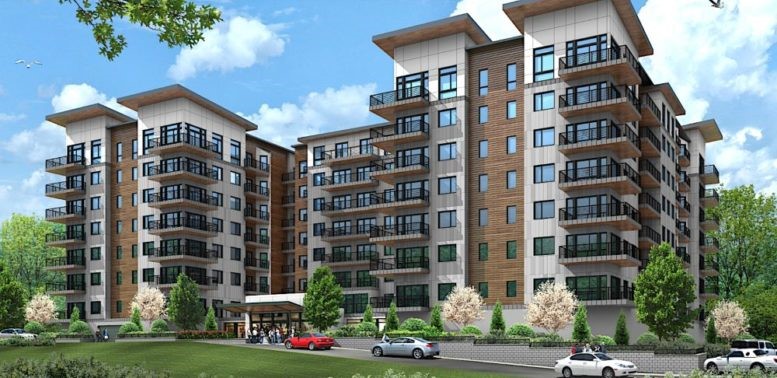
By 2018, the three projects’ 643 units were available for lease.
Yonkers’ TOD commitment has remained strong. As of October 2025, thousands of TOD housing units are under development, including:
- A 76-unit, 100% affordable housing complex near the Metro-North Train station, part of Governor Kathy Hochul’s Housing Plan to create or preserve 100,000 affordable homes statewide.
- A two-phase, 244-unit redevelopment near the Ludlow Metro-North Station, made possible through a 2022 ordinance amendment that established the Ludlow-Mixed Use (L-MX) zoning district. The first phase, a 36-unit apartment complex, opened in October 2024; the second phase, a 208-unit mixed-use development, is expected in 2026.
- Three AMS Acquisitions projects under development, which total over 4,000 units and 1 million sq. ft. of retail space. The developments are located at North Broadway, Teutonia Hall, and Chicken Island, and all are within walking distance of the Yonkers Metro-North station.
Yonkers’ pro-growth approach, including the use of payment in lieu of taxes (PILOTs) and streamlined approvals, have attracted approximately $3.6 billion in private investment since 2019, including over $1 billion in 2024 alone. Ten major developments approved in 2024 are expected to generate more than 2,100 residential units and nearly 2,400 construction jobs.
The rise in housing supply has also stabilized rents relative to wages. Between 2019 and 2024, median rent as a percentage of household income only rose by 0.3 percent in Yonkers, compared to 6.2 percent in Westchester County and 5.4 percent in New Jersey. In New Rochelle, this metric fell by 11.6 percent over the same period.
Building a Greener, More Livable Downtown
Although TOD in Yonkers has been driven largely by economic goals, it has brought environmental gains and quality of life improvements—most visibly the daylighting of the Saw Mill River. After being buried in the early 20th century, the river began to be restored in the 2000s using multiple funding sources. The first phase removed a decades-old parking lot adjacent to the Yonkers Metro-North Station.
Completed in 2012, this site became Van der Donck Park, featuring a reopened stretch of the Saw Mill River, new green space, a pedestrian bridge, and hundreds of native plant species. Yonkers has continued to reshape the surrounding area by narrowing the road to create a pedestrian-oriented commercial space and building the Sawyer Place, a two-tower, 438-unit residential project that opened in 2019.
Planning for Sustainable TOD
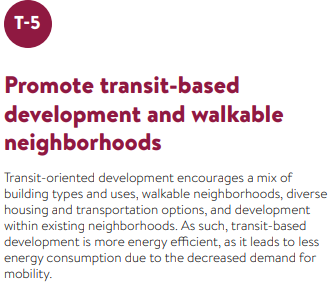
Yonkers’ progress with TOD stems from more than individual projects—it reflects sustained planning and policy decisions over the past decade. In 2015, as part of the New York Power Authority’s Five Cities’ Energy Plan initiative, Yonkers released its Energy Plan, which prioritized transportation efficiency. The plan called for creating active, mixed-use neighborhoods that are safe and easily accessible by walking, cycling, and public transit.
In 2016, the City strengthened this commitment by adopting a Complete Streets policy, designed to enhance the city’s transportation network and integrate active transportation into all future planning projects. This policy also led to the creation of the Complete Streets Annual Report, which tracks the progress of key initiatives, such as the addition of bike lanes, installing bike racks, improving crosswalks, and supporting TOD projects.
More recently, the Yonkers Office of Sustainability published a Climate Action Plan (2023), setting sustainability goals across multiple sectors. The plan highlights strategies to improve walking and biking infrastructure, prioritize public transit, promote transit-oriented development, and encourage mixed-use, walkable neighborhoods. Together, these coordinated plans provide a clear, long-term framework guiding Yonkers’ growth around transit hubs and supporting the city’s broader objectives.
New Rochelle
Expanding Housing Through TOD
New Rochelle Station is located centrally in the city, offering 30-minute commutes to Grand Central on the New Haven Line.
From 2000 to 2014, New Rochelle faced economic and housing challenges: inflation-adjusted household income fell by 8.5 percent, while inflation-adjusted rents rose by 16.5 percent. The city also struggled with aging infrastructure, limited job growth, and almost no new development. To reverse these trends, New Rochelle launched a unified pro-development strategy, which has delivered significant results.
Over the past decade, the city has added more than 4,500 new homes—a 37 percent increase in overall supply—with another 6,500 units approved or under construction. This period of rapid growth began in 2014, when New Rochelle selected real estate firm RXR to implement a comprehensive master development plan. The public-private partnership granted RXR exclusive rights to develop on 12-acres of city-owned land in the downtown, immediately catalyzing thousands of new units.
To accelerate development, the City Council streamlined approvals, relinquishing certain regulatory powers and enabling projects to move forward within just 90 days. A wide-scale environmental review conducted across a targeted downtown development area allowed developers to bypass individual assessments. Additional reforms included standardized zoning regulations and multiple tax incentive programs. Between 2021 and October 2025, the city attracted nearly $2.2 billion in developer investment, distributing $194 million in tax abatements while still generating $266 million in PILOT revenue.
Understanding public opinion was central to New Rochelle’s approach. The city conducted extensive community engagement through hearings, online forums, and informal meetings, ensuring new development met the needs of existing residents while accommodating growth. Innovative outreach tools, such as a virtual reality experience that allowed residents to visualize proposed changes, helped facilitate dialogue. Feedback highlighted two primary concerns: rising housing costs and increased congestion. In response, the City adopted an inclusionary zoning ordinance requiring that 10 percent of units in new multifamily developments to be designated as affordable and focused redevelopment around New Rochelle Station, which is the busiest station on the line outside of Grand Central.
These strategies helped secure broad public support under Mayor Noam Bramson. More than a decade later, Mayor Yadira Ramos-Herbert continues to advance New Rochelle’s development agenda, building on the city’s success in revitalizing its downtown while expanding housing opportunities.
The results are striking. Between 2020 and 2023, while median rent in the New York-Newark-New Jersey metropolitan area rose 14.5 percent, rents in New Rochelle fell by just over 2 percent. This decline occurred during a period of high inflation, meaning residents’ real housing costs fell significantly.
Recent Transit-Oriented Development
Following the adoption of its development plan, New Rochelle quickly approved the construction of thousands of new housing units, sustaining this pace of growth over the past decade. Nearly all of this new development has been concentrated around New Rochelle Station, reinforcing the city’s focus on transit-oriented growth.
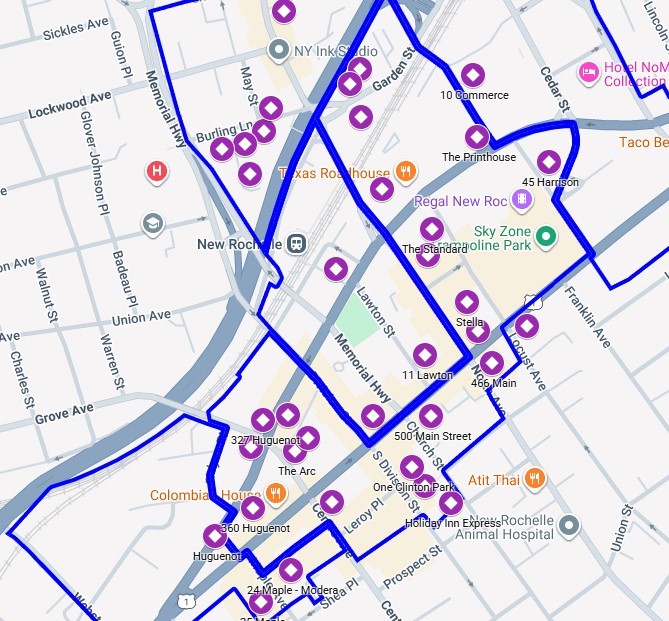

Among the recent projects, Highgarden Tower opened in August 2024 on a former brownfield site adjacent to the station. This 219-unit development is 100 percent affordable for households earning up to 80 percent of Area Median Income (AMI), with 77 units reserved for households that need on-site supportive services, including counseling and health coaching. The $135 million development received funding from the Department of Environmental Conservation’s Brownfield Cleanup Program, the Empire State Supportive Housing Initiative, and the New York State Department of Homes and Community Renewal.
In May 2025, The Leaf, a 26-story, 477-unit, mixed-use development, opened for rent. It includes 119 affordable units—20 designated for households earning 50 percent of the AMI—alongside 3,000 sq. ft. of retail, and a 23,000 sq. ft. church that can be converted into a community basketball court. The site is a five-minute walk from New Rochelle Station.

Stella, another mixed-use transit-oriented development within walking distance of the station, opened its first phase in March 2022 with 380 apartments and a ground-floor café. By June 2023, the building was fully leased. Construction on the second phase began in 2024 and will add 126 affordable, for-sale condominium units for households earning up to 80 percent AMI, along with 3,500 sq. ft. of ground-floor retail. Completion is expected in June 2027, expanding homeownership opportunities in the city.
As part of its Arts + Cultural District Master Plan released in 2017, New Rochelle also approved Westchester Place, a three-development project designed to create a central hub for artists in downtown. The first component, The Arc, opened in January 2023 with 144 units and 1,600 sq. ft. of ground-floor retail. The Atelier followed in fall 2023, offering 65 affordable residential units for local artists, 3,100 sq. ft. of ground-floor retail, and 1,600 sq. ft. of artist workshop space. Lastly, The Alary completed construction in October 2025, adding 315 market-rate units, artist space, and 7,500 sq. ft. of ground-floor retail. Westchester Place sits a quarter-mile from New Rochelle Station, anchoring the city’s downtown revitalization.
Reimagining the Station
New Rochelle Station has been the focal point of the city’s development strategies. However, past infrastructure decisions have limited the station’s potential. The construction of Interstate 95 and Memorial Highway in the 1950s created barriers that restricted pedestrian access to large parts of the downtown, and the station’s current layout makes it difficult to support the level of growth occurring around it.
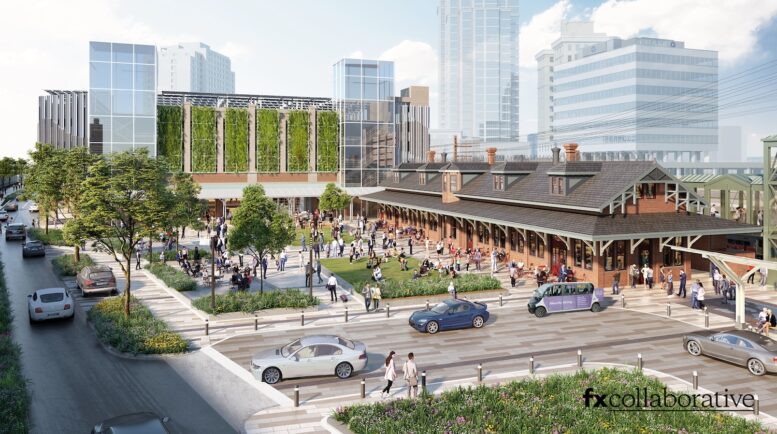
The development map above shows the results of the highway construction, where almost no development occurs west of the station.
Faced with these constraints, the city has launched plans for a $125 million station upgrade to improve pedestrian access, enhance rider amenities, and support transit-oriented development. With design already underway and construction scheduled to begin in 2026, the improvements will include new public green spaces and a parking garage with rooftop solar panels. The city aims to achieve LEED Gold certification for the renovated station building.
The upgrades will also prepare New Rochelle for the MTA’s planned Penn Station Access project, which will connect the station to Penn Station via an existing Amtrak line through the Bronx. The project will add four new stations in the Bronx and make New Rochelle the first station in Westchester with access to both Grand Central and Penn Station. Transit officials estimate that the project could double ridership at New Rochelle Station and provide new commuting options for residents. After multiple delays, the project is expected to be completed by 2028.
Shaping Westchester’s Future
Governor Kathy Hochul’s 2023 Housing Compact, which proposed mandating a 3 percent increase in housing stock for each municipality in Westchester County and rezoning areas near train stations to allow for greater density, sparked mixed reactions across the county. Twenty-five mayors and supervisors signed a letter opposing the Compact, arguing that it was an unrealistic approach to community growth and failed to consider local context. Notably, the names of the mayors of Westchester’s four largest cities—Yonkers, White Plains, New Rochelle, and Mount Vernon—did not join the letter.
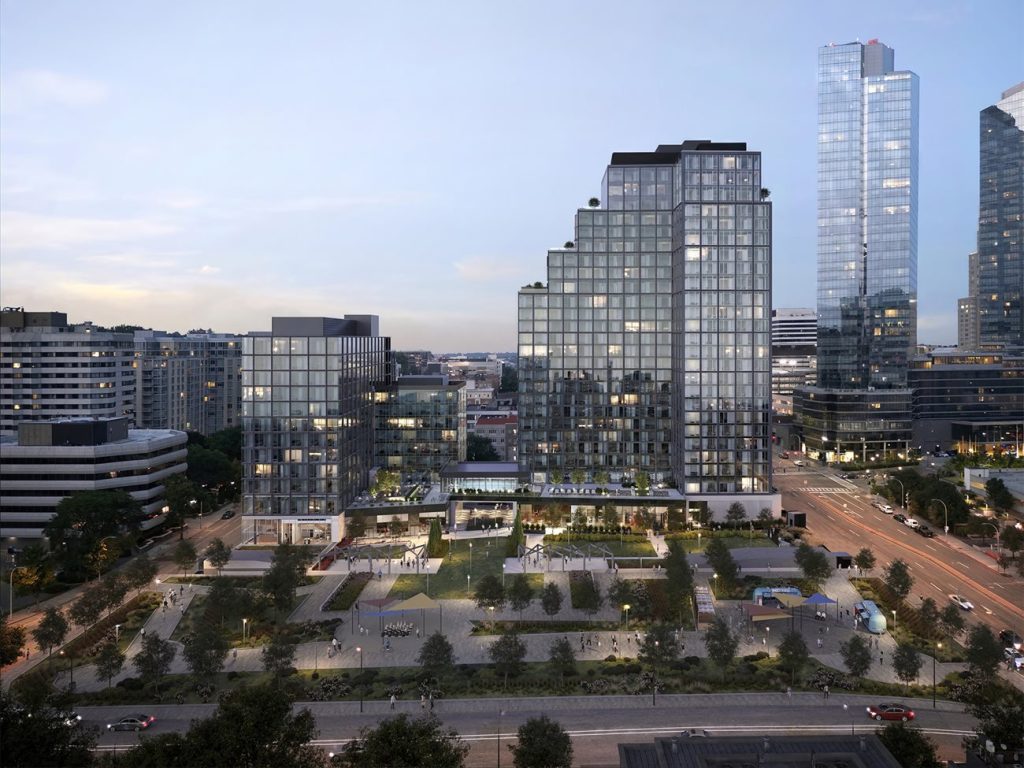
Although the Housing Compact proposal did not pass, several Westchester cities are moving forward with higher-density, transit-oriented housing. White Plains, for example, has nearly 7,000 units either under construction, recently completed, or in the approval process, and completed a $95 million renovation of its train station in 2021. Harrison, which also did not oppose the Compact, opened a 143-unit mixed-use apartment complex next to the Harrison Metro-North Station in 2023.
By focusing development around their train stations, Yonkers and New Rochelle have attracted billions of dollars in investment while keeping housing more affordable, supporting sustainability, and encouraging transit ridership. The strategies employed by these cities can serve as a blueprint for the rest of Westchester County and for communities in north and central New Jersey.
Resources
219-Unit Affordable Apartment Building Opens Doors in New Rochelle | Patch
A Train Station Is at the Heart of This NYC Suburb’s Downtown Revitalization | Smart Cities Dive
All Development News | 101010NR
Avalon Harrison Affordable Housing Development Completes Construction in Harrison, New York | New York YIMBY
Brokers’ Tour of Downtown Focuses on Yonkers Transit-Oriented Developments | Daily Voice
City of Yonkers Complete Streets Policy | City of Yonkers
Data Totals: Building and Financial | 101010NR
Explore the Stunning Daylighted Saw Mill River in Yonkers | Untapped New York
Financial Incentives Approved for 906-Unit Teutonia Hall at 4 Buena Vista Avenue in Yonkers | New York YIMBY
GDC Opens 70 Pier for Leasing at Ludlow Station in Yonkers | Lohud
Governor Hochul Announces Start of Construction on 76 Unit Affordable Housing Development in Yonkers | Office of Governor Kathy Hochul
Highgarden Tower Completes Construction at 11 Garden Street in New Rochelle, Westchester County | New York YIMBY
Hochul’s Housing Compact Scrapped in Budget Talks | Politico
How NYC Suburb Is Creating Affordable Housing | Bloomberg
How Thousands of New Rental Units Are Changing White Plains | Lohud
New Rochelle Development (map) | 101010NRNew Rochelle Unveils Ambitious $100M Renovation for Train Station | Lohud
Renderings Unveiled for New Rochelle Transit Center Redevelopment Plan | New York YIMBY
Stella New Rochelle Is Fully Leased After 15 Months | Patch
Story of the Daylighting | Groundwork Hudson Valley
The 26-Story Leaf Tower Celebrates Its Grand Opening in New Rochelle | Patch
The Arc: New Luxury Tower in Downtown New Rochelle Opens Leasing | Patch
The New York Housing Compact | Office of Governor Kathy Hochul
The Suburb That Defied NIMBY | Wall Street Journal
The Welcome Home Westchester Campaign Unveils “5 in 25” Agenda, Urges City, Town, and Villages to Take Housing Action This Year | Yonkers Times
Yonkers Climate Action Plan | City of Yonkers
Yonkers IDA Votes Preliminary Approval of Incentives for Three Projects | Yonkers Times
Yonkers Industrial Development Agency Continues to Shatter Records | Westchester Magazine
Yonkers Long-Term Approach to Development | Yonkers Times
Westchester Leaders, in Letter, Balk at Hochul Housing Plan. Here’s Why | Lohud
Work Wraps on The Alary at 33 Westchester Place in New Rochelle, Westchester County | New York YIMBY

